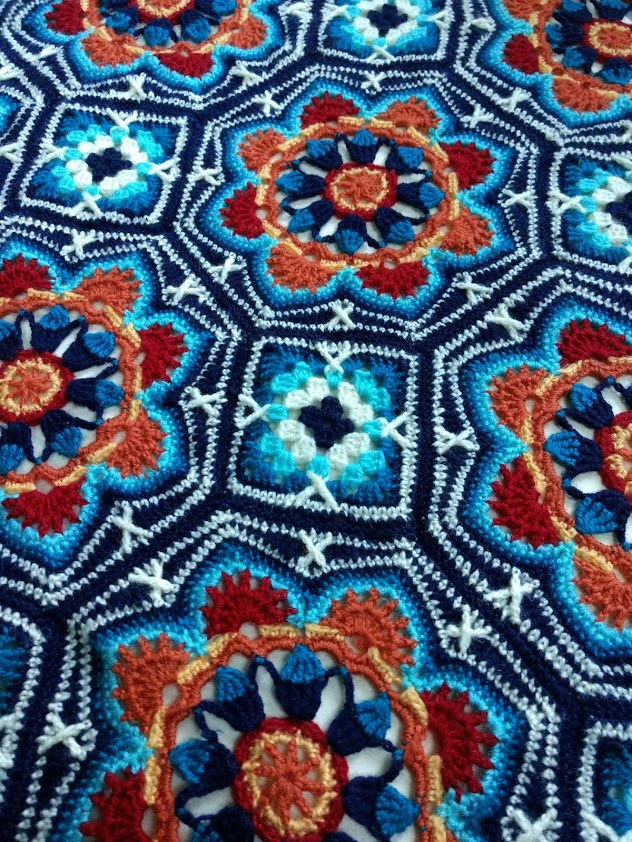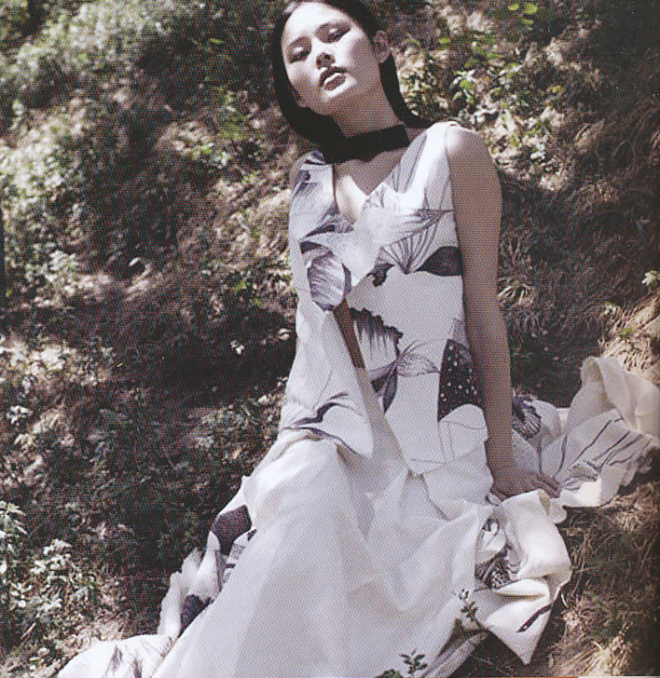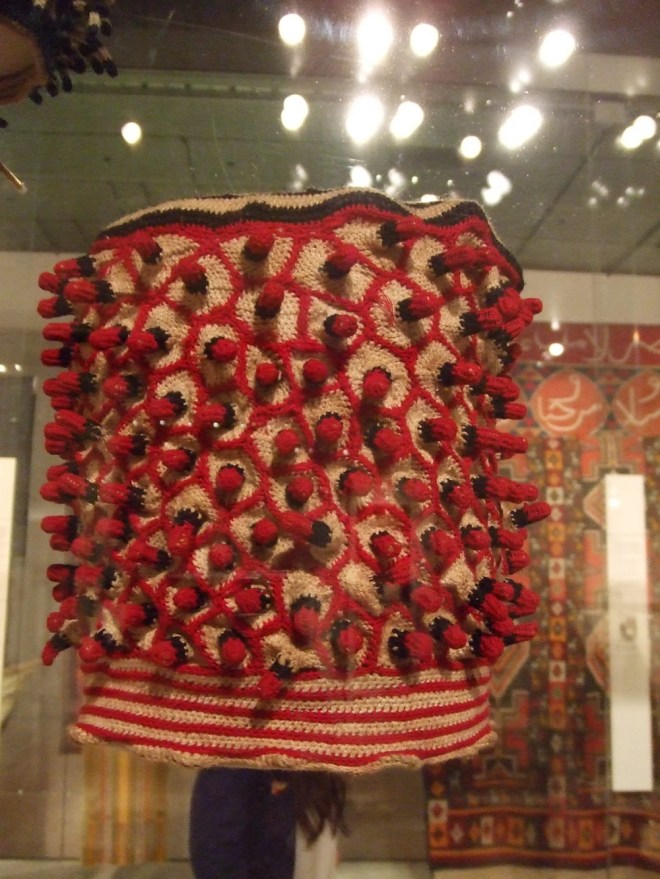I’m one of those people who can’t just sit and watch TV without doing something with my hands. In the summer this is usually stitching shibori patterns on scarves to be pulled up tight before being dipped in the indigo vat. But on long dark evenings, wool and needles seem to be more appropriate. And it’s so relaxing not having to make any creative decisions – just following a pattern.
Normally I would regard myself as a knitter rather than a crocheter, but I couldn’t resist this crocheted blanket pattern by Janie Crow, called Persian Tile. I bought the kit with yarn and pattern at the Knitting and Stitching Show in October, and it’s kept me going through all those long dark evenings. 🙂
I wouldn’t regard myself as an advanced crocheter. To start with, I had to revise the difference between double, half treble and treble crochet, and I had to refer to Youtube to find out about double treble crochet, which I’d never heard of.
The total blanket consists of 16 octagons, 9 more conventional granny squares, 12 half triangles for the edges and 4 quarter triangles for the corners. For the octagons I found it easier to crochet them all at the same time, ie do all the centres, then all the round 3s, round 4s etc, as it created a rhythm and once I’d got it I didn’t need to keep referring to the pattern. But it also meant that it took ages before I actually finished a single octagon!
The worst part was weaving in all the ends. The colour changed on every round, and some motifs, like the red and orange fans, were crocheted individually, so it seemed to take as long to sew in all the ends as to crochet the octagon! The triangles were also fiddly, because they were quite small.
It’s difficult to photograph the whole blanket, even though it’s not very large (about 110cm square). But it’s the perfect size for snuggling on the sofa on chilly January evenings in a draughty Victorian house. 😉
Happy new year!




































